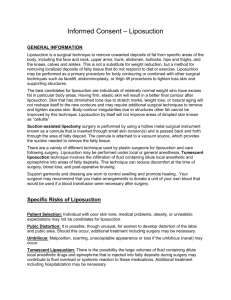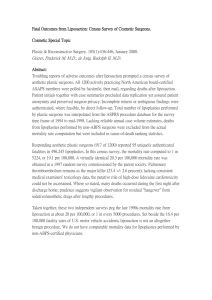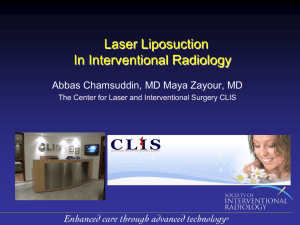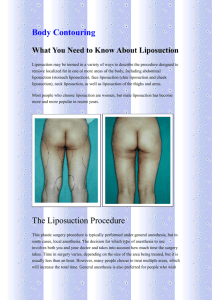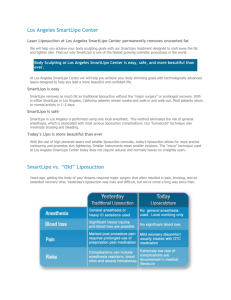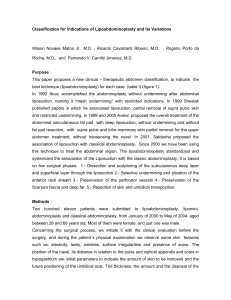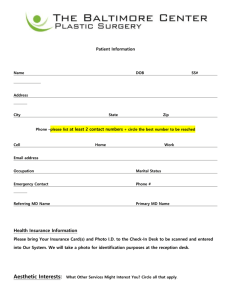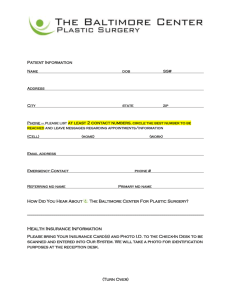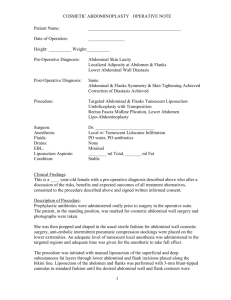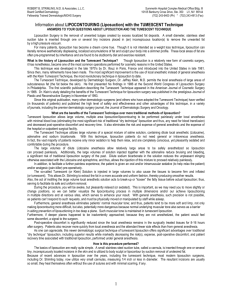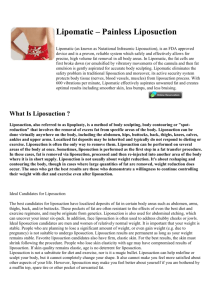Liposuction Consent
advertisement
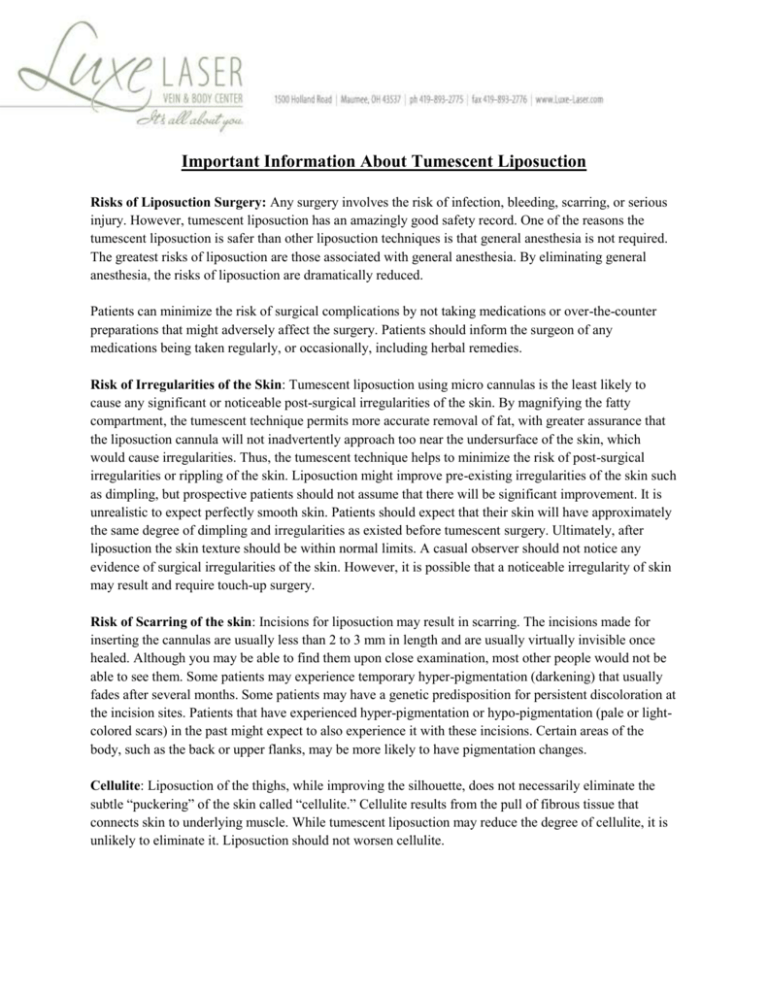
Important Information About Tumescent Liposuction Risks of Liposuction Surgery: Any surgery involves the risk of infection, bleeding, scarring, or serious injury. However, tumescent liposuction has an amazingly good safety record. One of the reasons the tumescent liposuction is safer than other liposuction techniques is that general anesthesia is not required. The greatest risks of liposuction are those associated with general anesthesia. By eliminating general anesthesia, the risks of liposuction are dramatically reduced. Patients can minimize the risk of surgical complications by not taking medications or over-the-counter preparations that might adversely affect the surgery. Patients should inform the surgeon of any medications being taken regularly, or occasionally, including herbal remedies. Risk of Irregularities of the Skin: Tumescent liposuction using micro cannulas is the least likely to cause any significant or noticeable post-surgical irregularities of the skin. By magnifying the fatty compartment, the tumescent technique permits more accurate removal of fat, with greater assurance that the liposuction cannula will not inadvertently approach too near the undersurface of the skin, which would cause irregularities. Thus, the tumescent technique helps to minimize the risk of post-surgical irregularities or rippling of the skin. Liposuction might improve pre-existing irregularities of the skin such as dimpling, but prospective patients should not assume that there will be significant improvement. It is unrealistic to expect perfectly smooth skin. Patients should expect that their skin will have approximately the same degree of dimpling and irregularities as existed before tumescent surgery. Ultimately, after liposuction the skin texture should be within normal limits. A casual observer should not notice any evidence of surgical irregularities of the skin. However, it is possible that a noticeable irregularity of skin may result and require touch-up surgery. Risk of Scarring of the skin: Incisions for liposuction may result in scarring. The incisions made for inserting the cannulas are usually less than 2 to 3 mm in length and are usually virtually invisible once healed. Although you may be able to find them upon close examination, most other people would not be able to see them. Some patients may experience temporary hyper-pigmentation (darkening) that usually fades after several months. Some patients may have a genetic predisposition for persistent discoloration at the incision sites. Patients that have experienced hyper-pigmentation or hypo-pigmentation (pale or lightcolored scars) in the past might expect to also experience it with these incisions. Certain areas of the body, such as the back or upper flanks, may be more likely to have pigmentation changes. Cellulite: Liposuction of the thighs, while improving the silhouette, does not necessarily eliminate the subtle “puckering” of the skin called “cellulite.” Cellulite results from the pull of fibrous tissue that connects skin to underlying muscle. While tumescent liposuction may reduce the degree of cellulite, it is unlikely to eliminate it. Liposuction should not worsen cellulite. Liposuction and Obesity: Liposuction is not an appropriate treatment for obesity. Liposuction is not a substitute for a prudent diet, good nutrition, and regular exercise. Obese patients may be good candidates for limited liposuction if their goal is simply to improve the shape of certain limited areas of the body. Postoperative Healing: Normal healing after tumescent liposuction involves a limited but definite degree of soreness, swelling, bruising, and lumpy firmness. A temporary mild numbness of the skin may persist for up to 4 months. Most patients can actually see some improvement of their silhouette within one week after surgery. However, because of the slow resolution of post-surgical swelling, the ultimate results following liposuction usually require 12 to 24 weeks to be achieved. Realistic Expectations: Although the results of liposuction are often quite spectacular, it is not realistic to expect perfection. It is impossible to guarantee the precise amount of improvement that will result from liposuction. Patients should not have unrealistic expectations. Although patients can usually expect to achieve at least a 50% improvement, it is unreasonable to expect 95% improvement or near perfection. For the perfectionist, or for liposuction of a very large area, maximum improvement may require a second procedure for which an additional fee may apply. Patients who would be satisfied with a 50% improvement would be reasonably good candidates for liposuction. The “50% Improvement” is intentionally a vague measure. It indicates a definite perceptible improvement, but something short of perfection. If a 50% improvement would make a patient happy, then it is likely that these expectations will be met. Longevity of Results: The fat cells that are removed by liposuction do not grow back. If the patient later gains or loses weight, the change tends to be distributed proportionately over the entire body. Although one can expect some changes with aging, provided that the patient does not gain large amounts of weight, the new, more pleasing silhouette is relatively permanent. _____________________________________________________ Patient Signature ___________________________ Date _____________________________________________________ Patient Name (Print) ___________________________ Date _____________________________________________________ Witness Signature ___________________________ Date
